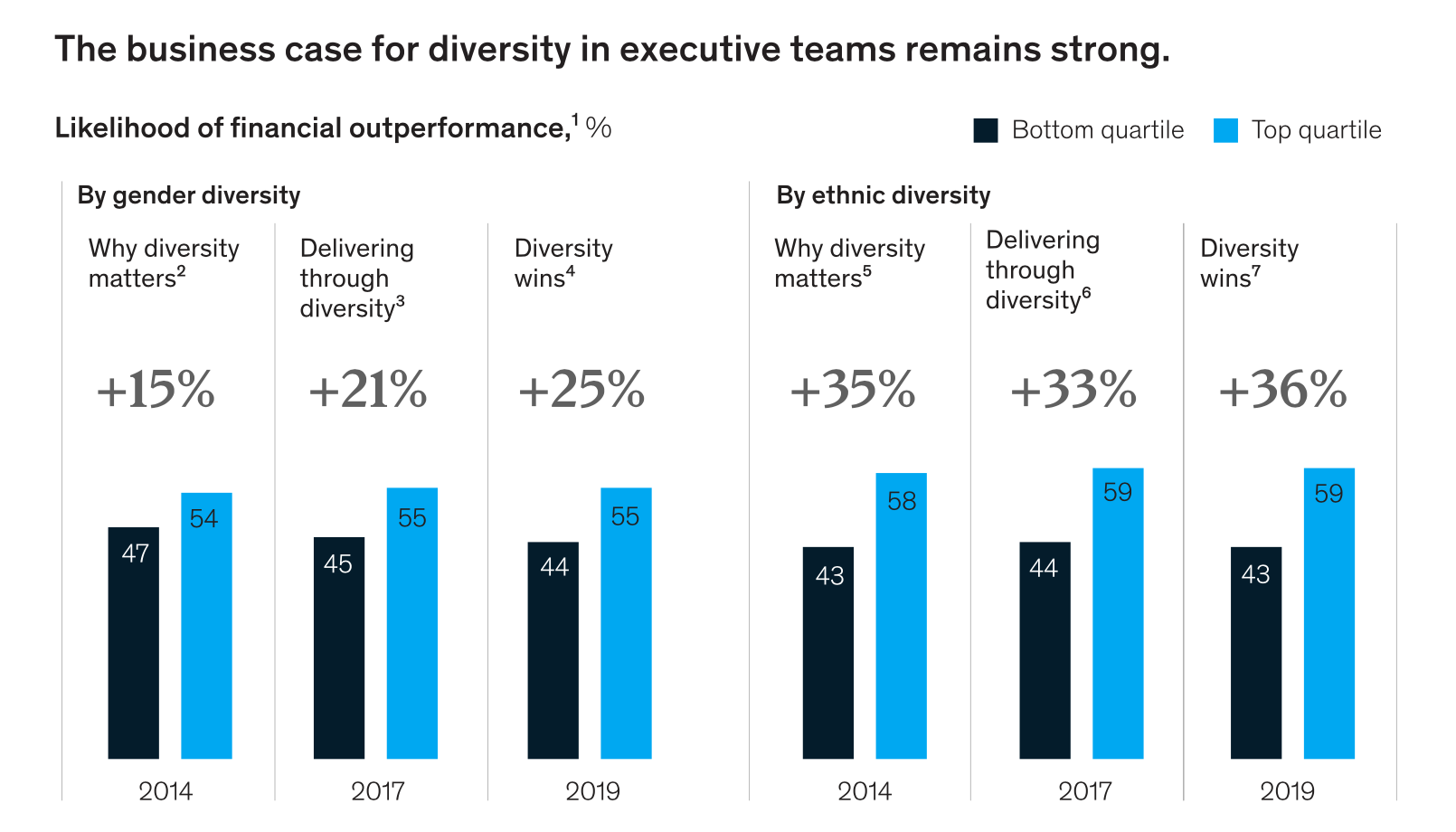Did you ever ask yourself how you feel about certain things? Or on the contrary, how others feel about the same things? Starting to investigate your perspective in contrast to others will most definitely bring light to the fact that we see things differently. But it is our unconscious, preconceived biases that constantly affect us. By examining our own biases you will discover hidden and sometimes negative stereotypes that affect how we relate to other people. In this blog article, we explore how diversity hiring is creating more efficient and successful organizations.
Ingrained human biases
Everyone has biases. You, me, your boss, your colleague, the miss congeniality-friend, your partner… Well, I think you get the picture and why it is a good thing to address and be aware of. Because if you already have a picture of what type of staff you want to hire, it’s difficult to change that image. Not only that, most of us are actually not really aware of our own bias when recruiting new people to our organization.
Let me give you an example: the librarian. In Sweden, a typical bias for this person is that this is a white woman in her mid-fifties, in a grey cardigan, flats, a tight hairstyle, and glasses. She may hide amongst the bookcases and jump forward when you least expect it to silence children who talk too loudly. When you see her in front of you, she may have an index finger in front of her mouth and ask you to lower your voice. Because in libraries, you are only allowed whisper. But why is this how we picture a librarian? Did everyone in Sweden see a librarian just like her when they grew up? Or maybe they have seen a “typical” librarian in movies and so on. This is only one bias, based on one country. Of course, the prejudice of a librarian can look very different in other parts of the world.

Diversify your recruitment and find hidden talent
Regular hiring may often give you candidates that reflect the company’s employees. Or even reflect your own bias of whom you think the candidate should be. If you instead choose to use the praxis of diversity hiring you will have a much wider range of candidates. They will be based on merit with special care taken to ensure procedures have reduced biases. Especially those related to the candidate's age or gender, color of skin, religion, sexual orientation, and socioeconomic background. Or other personal characteristics that are unrelated to work performances.
To identify and reduce likely preconceptions in sourcing, screening, and shortlisting, you should make your process objective and fair. This will help you source candidates that may be overlooked or unintentionally discriminated against. An example is to remove the barrier of anything that is not related to the skill set.
How to avoid interview bias
1. Consider your hiring goals. Being mindful of interviewing biases is an important part of avoiding them in your own hiring processes. It can help to consider your own hiring goals and specifically identify equitable hiring and interviewing practices you’d like to maintain before entering the interview setting.
2. Recruit broadly. When you know your own goals and objectives in interviewing, you can use an array of strategies to begin meeting them. Recruiting from a variety of locations and backgrounds, for example, can help diversify your candidate pool and avoid interviewing biases.
3. Use multiple interviewers. Next, set up conversations using multiple interviewers with specified questions. This can help alleviate the affects of any one individual’s biases in interviewing.
4. Anonymize when possible. If at all possible, keep parts of the interview process anonymous. If your candidates must complete a test, for example, keep the names and profiles of individuals separate from their test results as long as you are able.
5. Develop structured, open-ended questions. Standardize your questions and questioning processes wherever possible. You might do this by providing every interviewer with an interview guide and a set of questions to use in their discussions. Try providing training for interviewers on avoiding bias, as well.
Read more about our approach to diversity hiring.
Increase innovation and creativity
In McKinsey & Company’s report (Diversity Wins: How inclusion matters) from 2020, they state that companies and institutions with greater levels of diversity are achieving better financially.

With the right conditions and leadership, mixed groups are more innovative and creative, and in addition, the work environment is proven better by diversity. Another effect of conscious diversity work is that it increases the company’s trustworthiness in relation to customers, users, and the outside world. Because having employees with different skills and backgrounds gives us knowledge and perspectives that help us understand the different needs of the target groups. Having diverse staff also enables us to understand and meet the needs of people. By taking different perspectives into consideration, you also create an atmosphere that supports positive relationships and communications. When a company is dominated by one type of individual their collective blind spot will add up to tunnel vision.
Using AI for diversity hiring
AI for recruiting represents an opportunity for recruiters to reduce the time spent on repetitive, time-consuming tasks. Such as automating the screening of resumes, automatically triggering assessments, or scheduling interviews with candidates. AI especially has several potential applications for automating high-volume, repetitive tasks such as pre-qualifying candidates. Today, there are several software to assess blind resumes and chatbots that can be used to screen applicants. But until now, there haven’t been any objective tools that could take away bias from the interview. Which makes the job interview a risky step in the recruitment funnel. And at risk of being inefficient and expensive. To change that, we combined conversational AI with an unbiased recruitment methodology and developed Tengai to improve the way you screen, assess, and ultimately hire talent.
Book a free demo to learn how Tengai can help you create a more unbiased hiring process.

